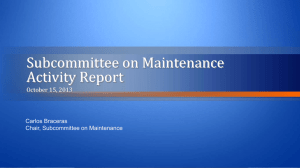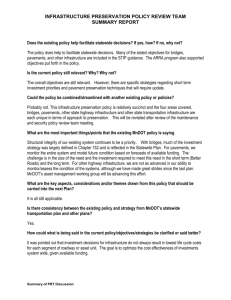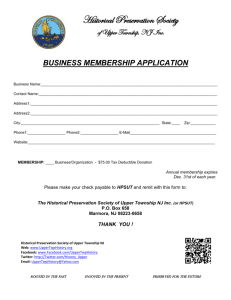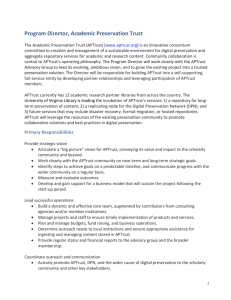Proposal for NCHRP 3-26
advertisement
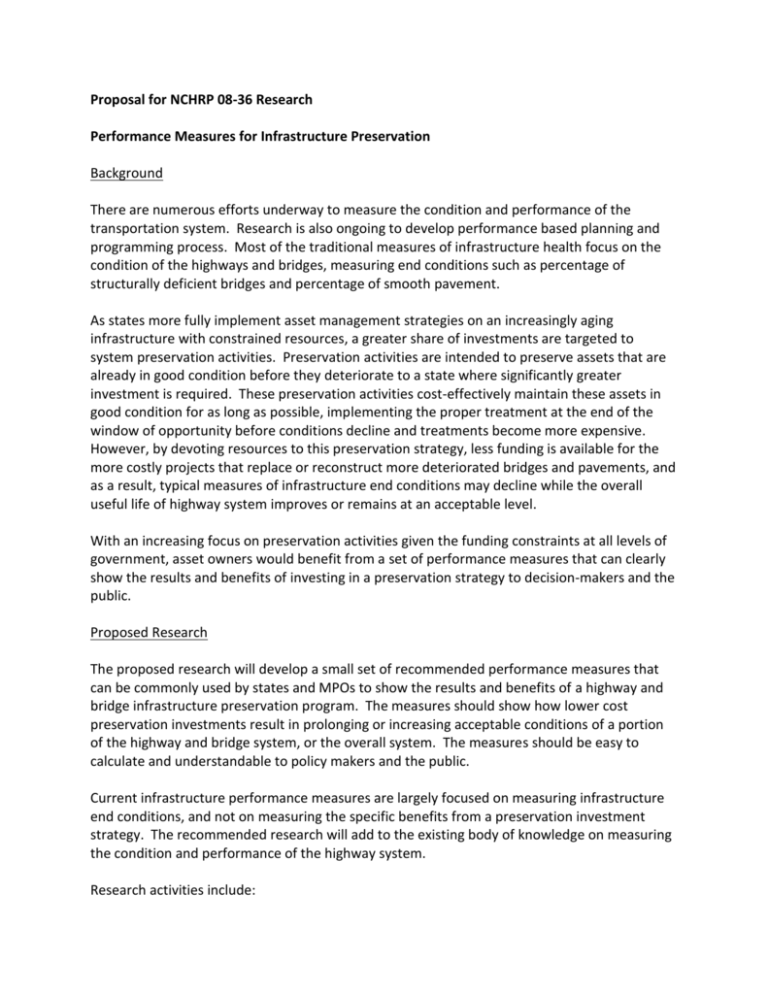
Proposal for NCHRP 08-36 Research Performance Measures for Infrastructure Preservation Background There are numerous efforts underway to measure the condition and performance of the transportation system. Research is also ongoing to develop performance based planning and programming process. Most of the traditional measures of infrastructure health focus on the condition of the highways and bridges, measuring end conditions such as percentage of structurally deficient bridges and percentage of smooth pavement. As states more fully implement asset management strategies on an increasingly aging infrastructure with constrained resources, a greater share of investments are targeted to system preservation activities. Preservation activities are intended to preserve assets that are already in good condition before they deteriorate to a state where significantly greater investment is required. These preservation activities cost-effectively maintain these assets in good condition for as long as possible, implementing the proper treatment at the end of the window of opportunity before conditions decline and treatments become more expensive. However, by devoting resources to this preservation strategy, less funding is available for the more costly projects that replace or reconstruct more deteriorated bridges and pavements, and as a result, typical measures of infrastructure end conditions may decline while the overall useful life of highway system improves or remains at an acceptable level. With an increasing focus on preservation activities given the funding constraints at all levels of government, asset owners would benefit from a set of performance measures that can clearly show the results and benefits of investing in a preservation strategy to decision-makers and the public. Proposed Research The proposed research will develop a small set of recommended performance measures that can be commonly used by states and MPOs to show the results and benefits of a highway and bridge infrastructure preservation program. The measures should show how lower cost preservation investments result in prolonging or increasing acceptable conditions of a portion of the highway and bridge system, or the overall system. The measures should be easy to calculate and understandable to policy makers and the public. Current infrastructure performance measures are largely focused on measuring infrastructure end conditions, and not on measuring the specific benefits from a preservation investment strategy. The recommended research will add to the existing body of knowledge on measuring the condition and performance of the highway system. Research activities include: Review of relevant research on measuring results of preservation activities, including current efforts by FHWA’s Office of Performance Management Short survey of states, MPOs and other highway and bridge asset owners on currently used preservation performance measures Assessment of current practice and identification of areas which lack existing measures of preservation performance Development of a list of recommended measures that can be used by states, MPOs and asset owners to describe the results of a preservation strategy on an improved highway and bridge system Definition of any data and condition modeling needs of recommended measures Preparation of a Final Report describing the results of the research, compilation of relevant performance measures and any recommendations for future research. Potential measures could include such measures as increase in percentage of pavements or bridges in good condition, number of years of useful life added to the asset, or reduction in backlogged needs. Other measures being used by states or MPOs, or under study should also be reviewed and any new measures presented. The result of this research would be a small set of recommended performance measures that clearly show the change in condition of, or the otherwise investment benefits to, the highway and bridge system from a preservation first strategy. Funding and Schedule The recommended research should be completed in 9 months at a cost of $100,000. Submitted by: NYSDOT Lynn Weiskopf 518-457-2320 lweiskopf@dot.state.ny.us

